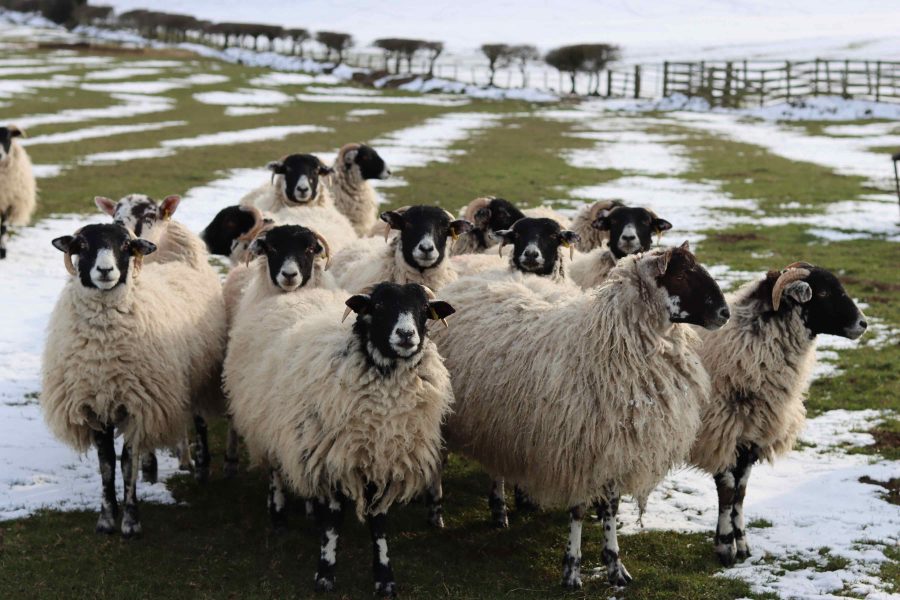Jenny Tibbles considers the options for our woollies in the winter…
As with sheep generally, it’s not a straightforward management decision but requires a lot of thinking about your sheep and why they are kept. It also must take into account what land you have available, especially in this increasingly wet weather we are now experiencing.
I think we can all agree that sheep should have shelter available. Kept on mountain or moorland, they will seek out their own as they have large and varied territory. Add to that, many kept this way will be established families and the knowledge of ‘hefting’ (living in a certain area and not straying) is bred in them. The hive mind of the flock knows instinctively where to go for bad weather, where to search for food and is a long way from the large framed downland breeds that have been bred more for meat than survival. Yes, sheep can live in extremely inhospitable places but not all breeds are able to survive or thrive. Even so, the changing weather can catch them out as a place they once thought would be dry or unflooded can change. The farmer or smallholder will still need to shepherd them and offer food in bad weather. They are still a responsibility from the point of view of good animal welfare.
CONSIDERATIONS FOR WINTERING SHEEP
- Is your land safe? Does it flood and is it excessively wet? If the answer to that is ‘yes’ then you will need to either find winter grazing or bring them inside for at least part of the winter.
- If you decide to winter out, have you provision to bring them in if there is extreme weather such as flooding or deep snow? If it is away from your house, are they safe from dog attacks? Can you get to see them even in winter weather every single day?
- What breed of sheep are they? The primitive type breeds and hill or moorland breeds will cope much better with the winter as long as they have sufficient forage and access to some kind of shelter. Good natural shelter with hedging, and land that has natural dips is hard to come by, so you may need to provide at least a three-sided shed with a roof
- What stage are the sheep at in their life? Again, for the hardier breeds, this might not matter so much as long as they have sufficient land and natural resources, but they will still need careful shepherding. But for all other sheep, the very young and the very old will need extra care. Older sheep will have lost or will be losing teeth and to keep them well they will need hard feed as well as forage they can easily access. Younger sheep, especially if born later on in the year, will need additional compound feeding and plenty of forage available. Pregnant ewes are particularly vulnerable. It’s not just them, they need to nourish but their lambs as well. They will need additional feeding, accessible forage and mineral blocks, plus energy licks later on in the pregnancy. Speak to a feed manufacturer for advice and of course, your vet. There are many nutrition related illnesses in pregnant sheep, such as twin lamb disease and these can be avoided by correct feeding.
PREPARING FOR LIVING OUTSIDE
Get the sheep caught up and check their body condition. If you don’t know how to condition score, you can ask your livestock vet to show you how. There are also numerous YouTube videos – do use theUK system though and this link is really informative.
This article originally appeared in the November 2023 issue of The Country Smallholder magazine. To receive regular copies of The Country Smallholder magazine featuring more articles like this, subscribe here.
For FREE updates from the world of smallholding, sign up for The Country Smallholder newsletter here.








